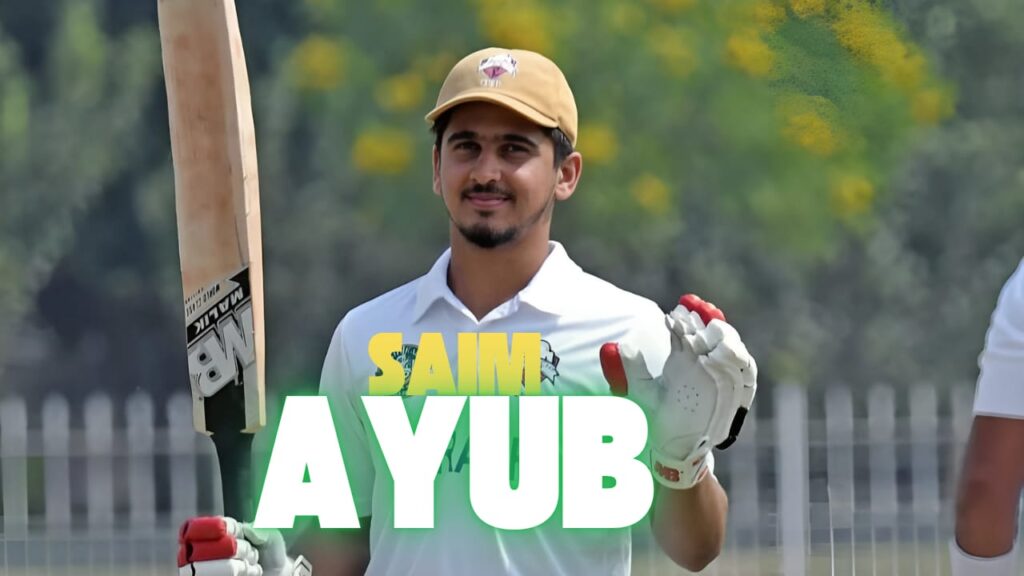The sport of cricket has long encouraged rivalries amongst individuals as well as between teams. Two names that have drawn interest from both fans and commentators in the modern period are Saim Ayub from Pakistan and Shubman Gill from India. Their accomplishments in international cricket have created the conditions for an intense competition between two young, talented players with amazing batting skills. Let’s examine their early recordings, their performances in various forms, and the opinions of fans both domestically and internationally.
Early ODI Records: Shubman Gill vs. Saim Ayub
After nine ODI matches, the numbers speak volumes about the talent and promise both players bring to the game:
Shubman Gill:

- Runs Scored: 499
- 50s: 3
- 100s: 2
- Average: 62.37
- Strike Rate: 88.12
Shubman Gill has been incredibly reliable, constructing innings with an air of poise and elegance. It has been an asset for India since he can consolidate the innings and accelerate when needed. He can occupy the start and turn it into a big score, as he has shown in the last nine games with two hundreds.
Saim Ayub:
- Runs Scored: 515
- 50s: 4
- 100s: 1
- Average: 64.37
- Strike Rate: 92.45

Conversely, Saim Ayub has wowed with his aggressive play and creative shooting. His four half-centuries highlight his consistency despite his relative inexperience on the international scene, and his lone century demonstrates his capacity to create innings that define a match.
Performance Across Formats
Shubman Gill:
Test Cricket: Gill is technically very capable, and one has seen glimpses in red-ball cricket already-such as in the historic win of the Test series in Australia, for instance.
T20Is : Though he is more of an anchor, he has already shown that he can adapt to the shorter format and focuses on controlled aggression and strike rotation.
Saim Ayub:
Test Cricket: Ayub has just begun his career in Test cricket. His batting style would classify him as one of the best openers in test format too.
He is a batsman who has a little bit of craziness in his body, much like some of Pakistan’s best limited-overs cricket players. In T20 cricket, this boy goes on bowlers from the very beginning for that reason.
The Fan Rivalry: India vs. Pakistan
This sport has one of the most intense rivalries when it comes to India and Pakistan cricket fans. Both Shubman Gill and Saim Ayub are new hope for both their countries and are often being compared to legendary players of yesteryear.
Indian fans have seen Gill as the next big thing in the Indian cricketing heritage. He presents himself to fans as a very calm person and has a textbook technique, making fans believe he can be a future leader in Indian cricket.
Fans in Pakistan view Saim Ayub as fresh air. The fans have liked his fearlessness in batting and already have given him a cult status with his performance under pressure.
Interestingly, the fans from other cricketing nations have also taken notice of this budding rivalry. While some admire Gill’s elegance, others are captivated by Ayub’s audacious strokeplay. Neutral fans hope this competition will elevate the standard of cricket and bring back the golden era of India-Pakistan contests.
Beyond the Numbers: A Celebration of Talent
Although the statistics depict their potential, competition lies in the different approaches they have. Each game that they play is a show because of the traditional grace of Shubman Gill and the unconventional flair of Saim Ayub.
Fans of cricket can indeed look forward to a plentiful package of action-packed games between these two emerging talents who are not only going to define their futures but also start new generations in the great and historic India-Pakistan rivalry. Be it a bilateral series or a World Cup game, both Gill and Ayub will certainly be in the limelight as the cricket world watches them spellbound.



I’ve been browsing onlihe more than three hours today, yet I never found any
interesting artticle like yours. It’s pretty woorth enough foor me.
In my view, if all site owners and bloggers made good content as you did, the
web will be a lot more useful than ever before. http://boyarka-Inform.com/